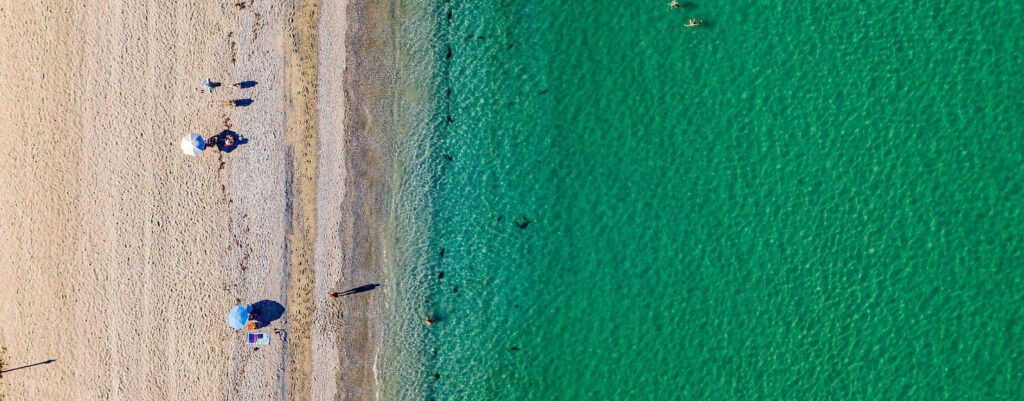Palia Vrontou

Built at an altitude of 400 m, the village acquired its name (ed. note: vrontos means loud noise) from the roar of the mountain’s waters rushing through the village. It’s a a ghost town today, with the old church of Agios Nikolaos being the only surviving building, with a hand-carved wooden altarpiece, which has been declared a protected monument.
Petra

Petra village is situated on the slopes of Mt. Olympus at an altitude of 520 m. Featuring an amazing view, stone-built houses, taverns with local delicacies such as game meat cooked with traditional recipes, pilgrimage to the church of Agios Georgios at the heart of the village, hiking or mountain biking in the midst of the bountiful nature, a visit to Petra is a must.
Litochoro beach – Plaka

Plaka is a natural cove and is known as the harbour of Litochoro. Its long-stretching pebbly beach surrounded by natural rocks and shady plane trees compose an impressive picture.
Church of Agia Paraskevi | Kokkinopilos

In the Kato Toka suburb in Kokkinopilou, we find the church of Agia Paraskevi built in 1732. It is a three-aisled basilica, and its characteristic feature is the trout – mermaid in its wood-carved screen that was crafted in Amouri in 1853 out of walnut wood. The church was burnt down by the Turks on 10 May 1821 and rebuilt in 1832.
Neoi Poroi

With a shore stretching for five kilometers, the seemingly interminable sandy beach of Neoi Poroi is the southernmost coastline of Pieria and attracts thousands of visitors every summer. There’s an abundance of hotels and rooms-to-let for every budget, while it also features an array of water sports, great restaurants and taverns with delicious food, numerous stores and bars, meeting all needs for carefree holidays.
Kokkinopilos

The village Kokkinoplos or Kokkinopilos has become a holiday and relaxation spot, since it is the highest village on Olympus. It has an altitude of 1150m and its stone-built houses hanging from the mountain slopes create an impressive setting. Its name is linked to kokkinochoma (= red soil), which is an important substance for the village. Due to the region’s particular soil consistency, the local people are involved in the production of lime, apart from stock-breeding, wood-cutting and farming.